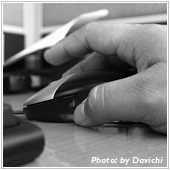 If you, for example, install multiple media player applications on your Android device, you’ll find that Android will give you the choice of which application to launch by default when you open a media file or document. However, you may later want to change this default setting.
If you, for example, install multiple media player applications on your Android device, you’ll find that Android will give you the choice of which application to launch by default when you open a media file or document. However, you may later want to change this default setting.
To do so, go to Settings > Applications > Manage applications and then press the "All" tab. Choose the application that you previously selected as default, and scroll to the section "Launch by default" and press the "Clear defaults" button. Next time you open that particular type of file in the future, Android will prompt you again to choose a new default app.

 Ever surfed for the number of a pizza place on your iPhone and just wanted to dial the phone number straight from the webpage? If you are using the default browser on your iPhone, which is Safari, that's no problem at all.
Ever surfed for the number of a pizza place on your iPhone and just wanted to dial the phone number straight from the webpage? If you are using the default browser on your iPhone, which is Safari, that's no problem at all. If you are using Internet Explorer and Windows 7, you may have noticed that when you mouse over an IE browser window, a preview of the open tabs in the browser is shown. While this is useful to give you an idea of the sites you have open, it can get annoying if you have multiple tabs open at the same time. If you would prefer to disable this feature, you can.
If you are using Internet Explorer and Windows 7, you may have noticed that when you mouse over an IE browser window, a preview of the open tabs in the browser is shown. While this is useful to give you an idea of the sites you have open, it can get annoying if you have multiple tabs open at the same time. If you would prefer to disable this feature, you can. A very useful feature in Microsoft Office is called "AutoRecover", which automatically saves your document at specified time intervals so that in case of an application or system crash, Office can recover its latest version.
A very useful feature in Microsoft Office is called "AutoRecover", which automatically saves your document at specified time intervals so that in case of an application or system crash, Office can recover its latest version. Leaving your computer for a short time but don't want anyone peeking at your desktop or files? Simply lock it. When you lock your desktop, anyone who wants to use it will have to log in using their username and password.
Leaving your computer for a short time but don't want anyone peeking at your desktop or files? Simply lock it. When you lock your desktop, anyone who wants to use it will have to log in using their username and password. In Microsoft PowerPoint 2010, you can set an animation to trigger when you click on an object. This is a simple way to add and control interactivity to your presentation. To add an animation trigger, select an object that already has animation applied to it.
In Microsoft PowerPoint 2010, you can set an animation to trigger when you click on an object. This is a simple way to add and control interactivity to your presentation. To add an animation trigger, select an object that already has animation applied to it. With Windows 7, there are easier and faster ways to rename multiple files in one sweep. The first way is to click on a file's name and rename it as usual, then press the "Tab" key to access the next file in the list.
With Windows 7, there are easier and faster ways to rename multiple files in one sweep. The first way is to click on a file's name and rename it as usual, then press the "Tab" key to access the next file in the list. In Windows, there are various options for configuring the speed, look, and behavior of your mouse pointer to exactly the way you want it.
In Windows, there are various options for configuring the speed, look, and behavior of your mouse pointer to exactly the way you want it.
